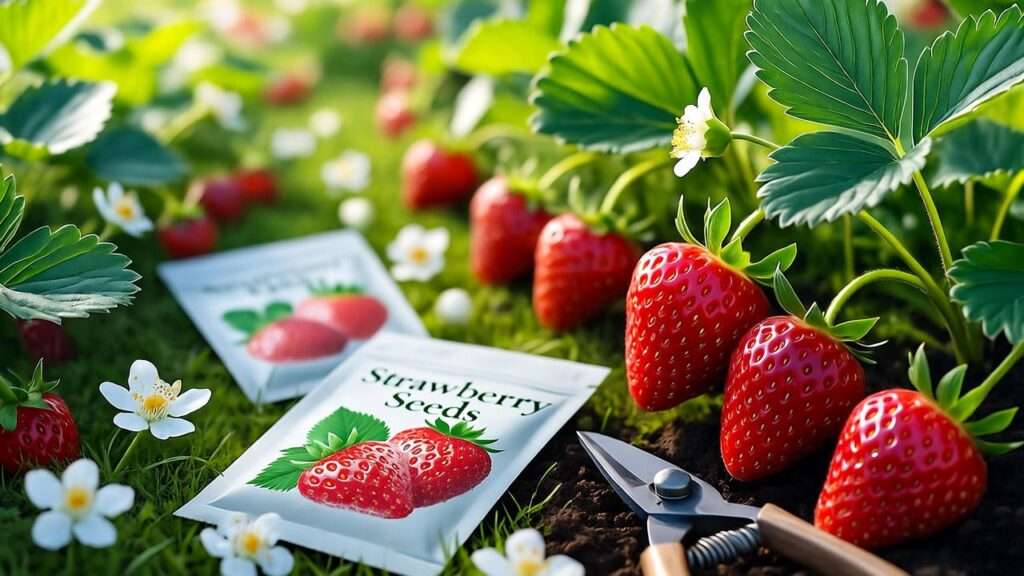Imagine sinking your teeth into a juicy, homegrown strawberry, bursting with sweetness you cultivated yourself. For gardeners, few joys rival the reward of harvesting vibrant berries from your backyard. But the secret to a thriving strawberry patch starts with one critical choice: selecting the best strawberry seeds for planting. With countless varieties and factors to consider, choosing the right seeds can feel overwhelming. Don’t worry—this comprehensive guide, backed by years of gardening expertise and research, will walk you through everything you need to know to pick high-quality seeds and grow a flourishing strawberry garden. Let’s dig in! 🪴
1. Why Choosing the Right Strawberry Seeds Matters 🌿
The foundation of a successful strawberry harvest lies in the seeds you choose. High-quality seeds lead to healthy plants, abundant fruit, and a rewarding gardening experience. Let’s explore why this decision is so pivotal.
1.1 The Impact of Seed Quality on Your Harvest
Seed quality directly affects germination rates, plant vigor, and fruit production. Premium strawberry seeds have higher germination rates—often 80-90%—compared to low-quality seeds, which may yield as little as 20%. Poor seeds can result in weak plants prone to disease or stunted growth, costing you time and effort. By investing in reputable seeds, you set the stage for robust plants and a bountiful harvest.
1.2 Aligning Seed Choice with Your Gardening Goals
Your gardening goals shape your seed selection. Are you growing strawberries for fresh eating, jams, or ornamental displays? Do you have a large garden or a small balcony? For example, home gardeners may prioritize flavor, while commercial growers might focus on yield. Understanding your objectives—whether maximizing fruit production or fitting plants into containers—helps you choose seeds that align with your vision.
2. Understanding Strawberry Seed Varieties 🍓
Strawberries come in diverse varieties, each suited to different climates, spaces, and preferences. Knowing the types available empowers you to make an informed choice.
2.1 Types of Strawberry Plants
Strawberries fall into three main categories, each with unique growing patterns:
- June-Bearing: These produce a single, large harvest in early summer, perfect for preserving or bulk harvesting. Popular varieties include Chandler and Honeoye.
- Everbearing: These yield two to three smaller harvests throughout the growing season, ideal for consistent fresh eating. Try Ozark Beauty or Quinault.
- Day-Neutral: These fruit continuously, even in warmer climates, making them great for small spaces or containers. Albion and Seascape are top picks.
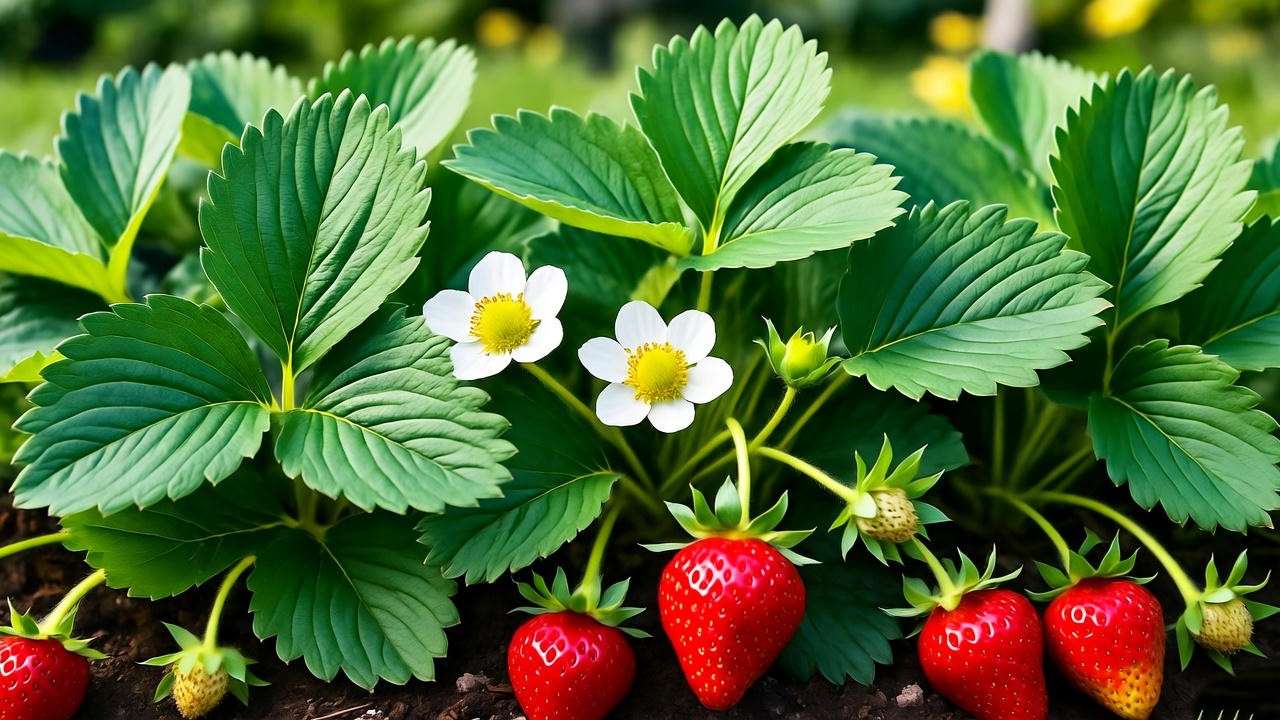
2.2 Heirloom vs. Hybrid Seeds
- Heirloom Seeds: Prized for their rich flavor and historical significance, heirlooms like Mara des Bois offer unique taste profiles. They’re open-pollinated, meaning you can save seeds for future planting, but they may be less disease-resistant.
- Hybrid Seeds: Bred for specific traits like disease resistance or uniform fruit size, hybrids like Tristar are reliable but may not produce true-to-type seeds if saved. Choose hybrids for consistency and resilience.
2.3 Organic vs. Non-Organic Seeds
Organic seeds, sourced from plants grown without synthetic chemicals, appeal to eco-conscious gardeners. They’re often certified by organizations like the USDA, ensuring purity. Non-organic seeds may be treated with fungicides, which can improve germination but raise concerns for organic purists. Both can yield excellent results, so weigh your values and gardening style when deciding.
3. Key Factors to Consider When Choosing Strawberry Seeds 🌍
Selecting seeds involves evaluating your environment and resources. Here’s what to consider.
3.1 Climate and Growing Zone Compatibility
Strawberries thrive in USDA hardiness zones 3-10, but specific varieties perform better in certain climates. For example, Earliglow excels in colder zones (3-6), while Camarosa suits warmer regions (7-9). Check your zone using the USDA Plant Hardiness Zone Map and choose seeds bred for your climate to ensure success.
3.2 Soil and Space Requirements
Strawberries prefer well-drained, loamy soil with a pH of 5.5-6.5. Test your soil before planting and amend it with compost if needed. Space is another factor: June-bearing varieties need more room (18-24 inches apart), while day-neutral types thrive in compact spaces like raised beds or pots. For small gardens, consider vertical planters to maximize space.
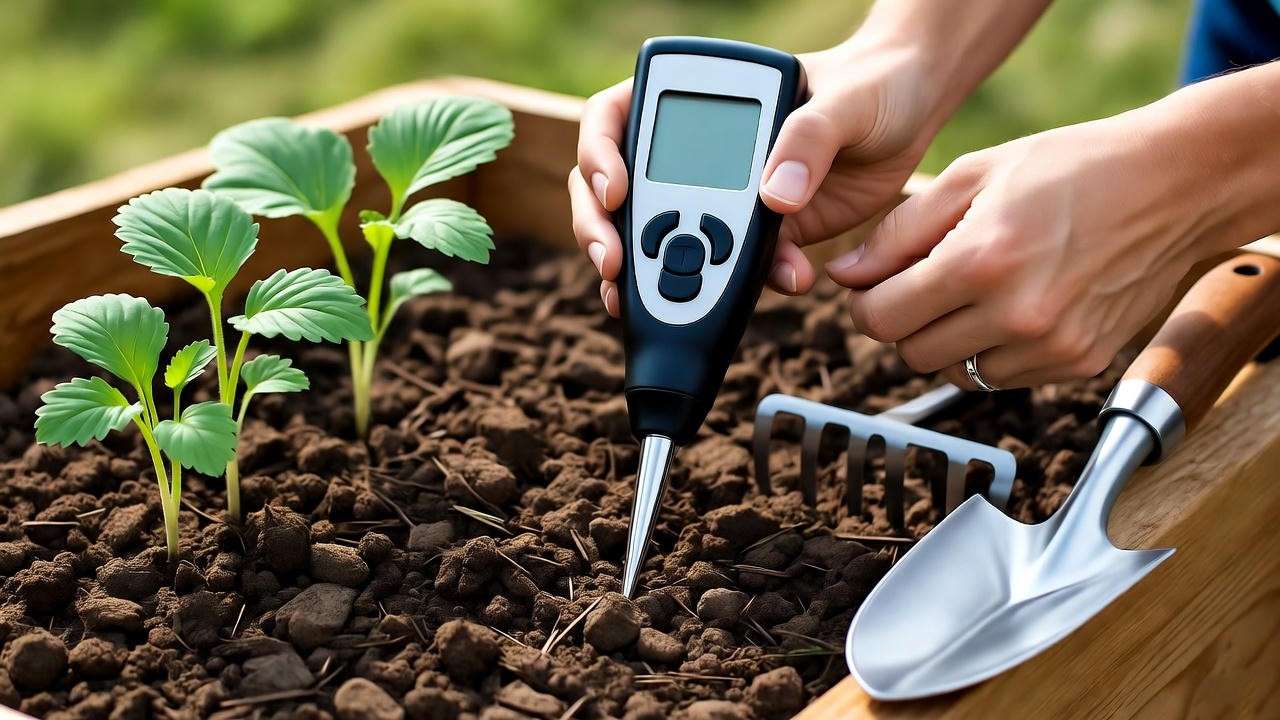
3.3 Disease Resistance and Pest Tolerance
Some varieties, like Allstar or Tribute, are bred to resist common issues such as powdery mildew or verticillium wilt. Research your region’s prevalent pests and diseases—consulting local extension services can help—and choose seeds with built-in resilience to reduce maintenance.
4. Where to Source High-Quality Strawberry Seeds 🛒
Quality seeds come from trusted sources. Here’s how to find them.
4.1 Reputable Seed Suppliers
Purchase from established suppliers like Johnny’s Selected Seeds, Burpee, or Baker Creek Heirloom Seeds. These companies offer tested, high-germination seeds and often provide detailed variety descriptions. Check for certifications (e.g., USDA Organic) and read customer reviews to verify reliability.
4.2 Local vs. Online Purchasing
Local nurseries offer the advantage of region-specific advice and fresher seeds, but selection may be limited. Online retailers provide a wider variety, often with detailed growing guides. When buying online, ensure seeds are shipped in airtight packaging to maintain viability. Always check the “packed for” date to avoid old stock.
4.3 Saving Seeds from Existing Plants
You can harvest seeds from ripe strawberries, but it’s tricky. Scrape seeds from the fruit’s surface, rinse, and dry them thoroughly. Store in a cool, dark place. Be cautious with hybrids, as saved seeds may not produce identical plants due to cross-pollination. Heirlooms are better for seed saving.
5. Step-by-Step Guide to Planting Strawberry Seeds 🌱
Planting strawberry seeds requires patience, as germination can take 2-4 weeks. Follow these steps for success.
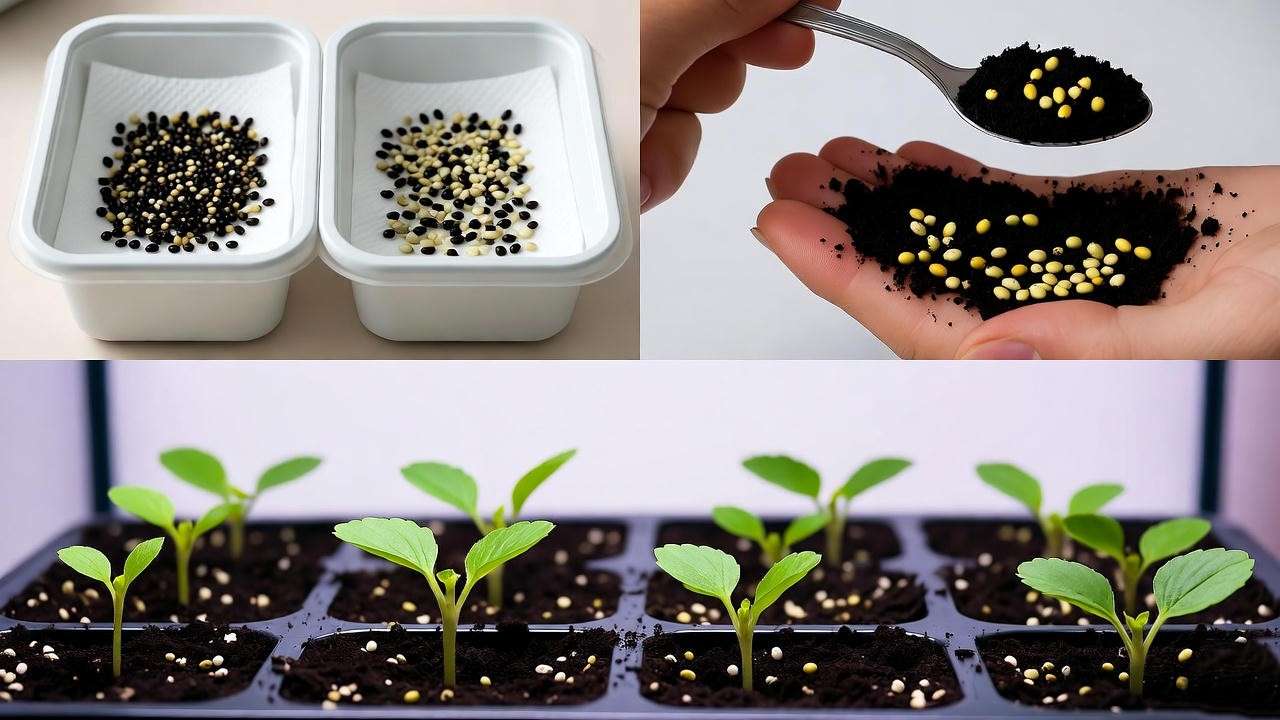
5.1 Preparing for Planting
- Timing: Start seeds indoors 8-12 weeks before your last frost date (check your local frost calendar). For example, in zone 6, start in late winter for spring transplanting.
- Materials: Use seed trays with drainage holes, a sterile seed-starting mix, and optional grow lights for consistent lighting.
5.2 Germination Tips for Success
- Stratification: Many strawberry seeds need cold treatment to germinate. Place seeds in a damp paper towel, seal in a plastic bag, and refrigerate at 35-40°F for 3-4 weeks.
- Sowing: Spread seeds lightly on the soil surface—don’t bury them, as they need light to germinate. Mist gently to keep moist.
- Conditions: Maintain 70-75°F and provide 12-16 hours of light daily. A heat mat can speed germination.
5.3 Transplanting Seedlings
- Transplant seedlings to the garden or containers when they have 3-4 true leaves and outdoor temperatures are stable (above 50°F).
- Space plants 12-18 inches apart in rows or raised beds. Ensure the crown (where roots meet stem) sits at soil level to prevent rot.
- Avoid overcrowding, which can lead to poor air circulation and disease.
6. Caring for Your Strawberry Plants Post-Planting 🌼
Proper care ensures your plants thrive. Here’s how to nurture them.
6.1 Watering and Fertilizing
Strawberries need consistent moisture—about 1 inch of water per week. Use drip irrigation or water at the base to keep foliage dry. Apply a balanced fertilizer (e.g., 10-10-10) at planting and again when plants begin flowering. Organic options like compost tea or fish emulsion work well.
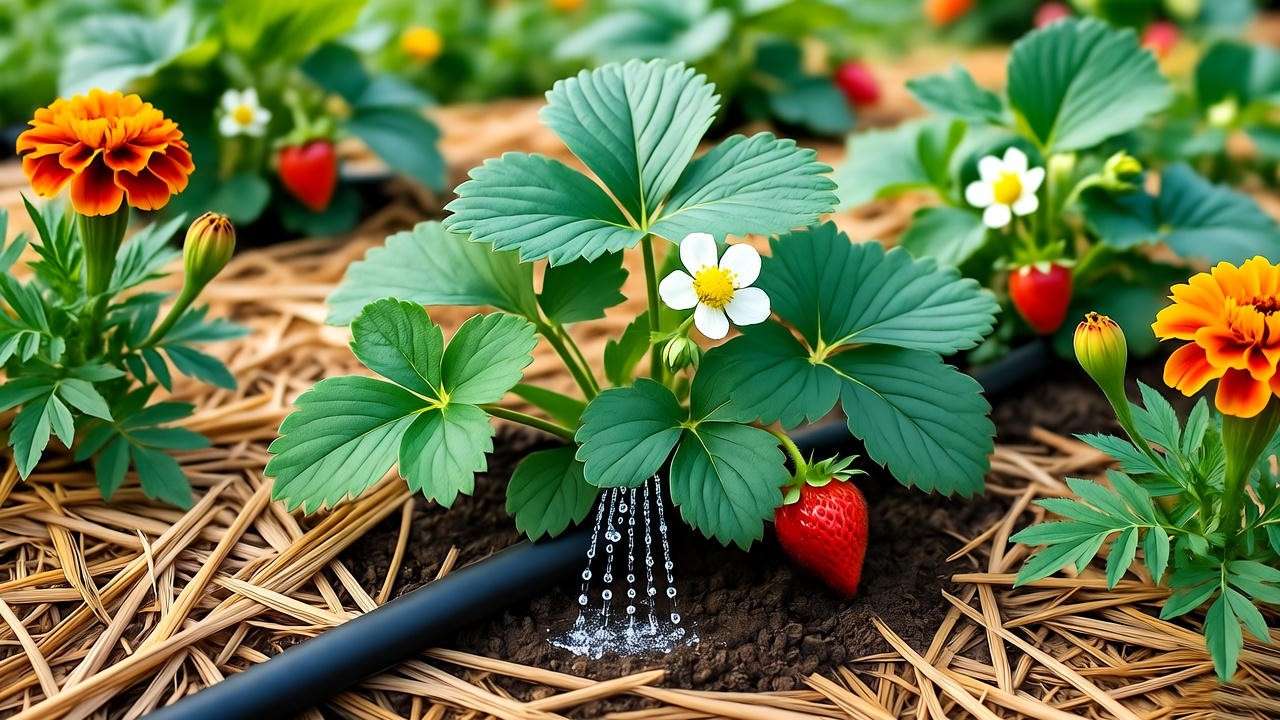
6.2 Pest and Disease Management
Common pests include aphids and slugs. Use neem oil or introduce beneficial insects like ladybugs for organic control. Monitor for diseases like powdery mildew (white patches on leaves) and treat with organic fungicides if needed. Remove affected leaves promptly.
6.3 Pruning and Maintenance
- Runners: Trim runners (long stems with baby plants) unless you want new plants. This directs energy to fruit production.
- Mulching: Apply straw or pine needles around plants to retain moisture and suppress weeds.
- Winter Care: In colder zones, cover plants with mulch or row covers to protect from frost.
7. Troubleshooting Common Strawberry Seed Issues 🔍
Even with the best strawberry seeds for planting, challenges can arise. Addressing these promptly ensures healthy plants and a fruitful harvest. Below are common issues and their solutions.
7.1 Poor Germination Rates
If your seeds aren’t sprouting, consider these factors:
- Old Seeds: Strawberry seeds lose viability after 1-2 years. Always check the “packed for” date when purchasing.
- Improper Stratification: Many varieties require cold treatment. If germination fails, try refrigerating seeds for another 2-3 weeks.
- Incorrect Conditions: Ensure seeds are kept moist (not soggy) and exposed to light. A heat mat can maintain the ideal 70-75°F temperature.
- Solution: Test a small batch of seeds for viability by placing them in a damp paper towel. If fewer than 50% sprout, source fresher seeds.
7.2 Weak or Leggy Seedlings
Seedlings that are tall, thin, or pale indicate insufficient light or nutrients:
- Light: Provide 12-16 hours of bright light daily. If using natural light, place trays near a south-facing window or use LED grow lights.
- Nutrients: Once seedlings develop true leaves, feed with a diluted liquid fertilizer (e.g., 1/4 strength 10-10-10).
- Solution: Move seedlings closer to a light source or thin overcrowded trays to improve air circulation and light exposure.
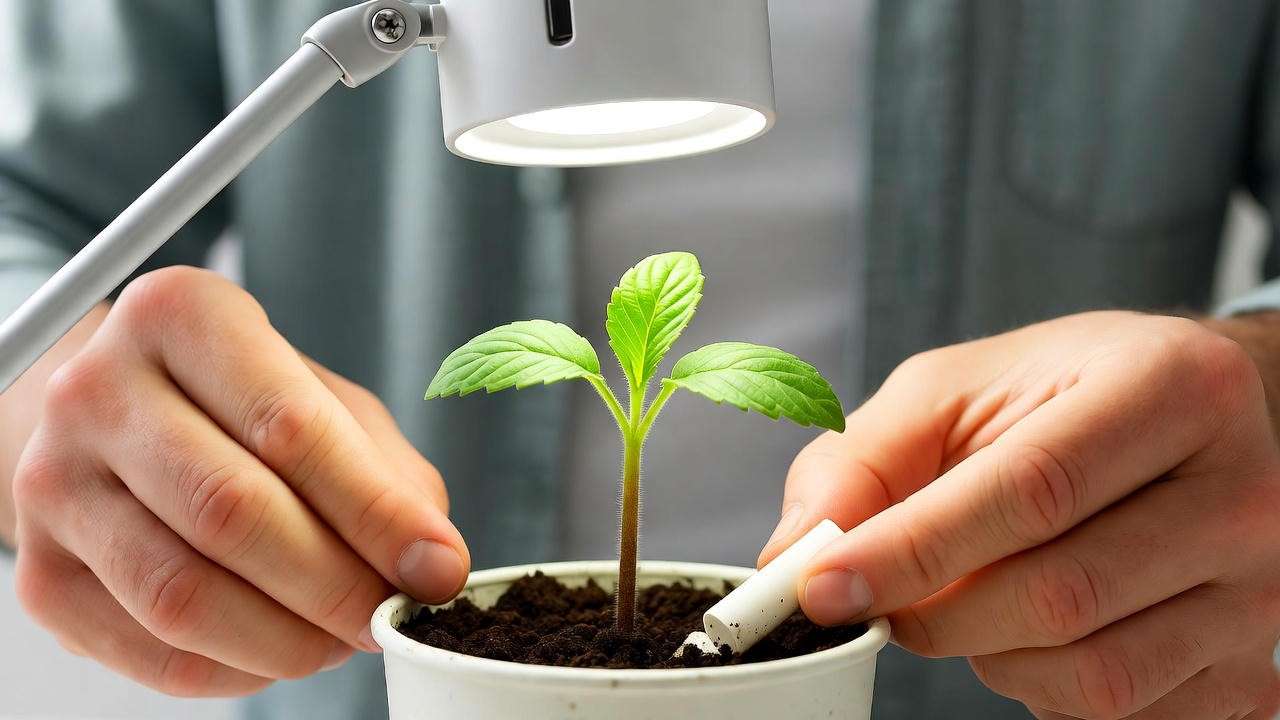
7.3 Preventing Fruiting Failures
If plants produce small or few berries, consider:
- Pollination: Strawberries rely on bees or wind for pollination. In greenhouses or urban settings, hand-pollinate using a small brush.
- Nutrient Deficiency: Low potassium or phosphorus can reduce fruit size. Apply a bloom-boosting fertilizer (e.g., 5-10-10) during flowering.
- Overcrowding: Too many runners or plants compete for resources. Thin plants to maintain 12-18 inches of spacing.
- Solution: Companion plant with pollinator-attracting flowers like borage to boost fruit set.
8. Expert Tips for Maximizing Your Strawberry Harvest 🚀
With the right strategies, you can elevate your strawberry game. These expert tips, drawn from years of gardening experience, will help you achieve a bumper crop.
- Companion Planting: Pair strawberries with borage, marigolds, or thyme to attract pollinators and deter pests. Avoid planting near brassicas (e.g., cabbage), which can compete for nutrients.
- Mulching for Success: Use organic mulch like straw or pine needles to regulate soil temperature, retain moisture, and prevent fruit rot. Apply a 2-inch layer around plants, keeping it away from crowns.
- Drip Irrigation: Install a drip system to deliver consistent water directly to roots, reducing disease risk from wet foliage.
- Season Extension: In cooler climates, use row covers or low tunnels to extend the growing season, allowing day-neutral varieties to produce into fall.
- Case Study: Jane, a home gardener in Zone 5, switched to Albion day-neutral seeds and used raised beds with drip irrigation. Her yield doubled, producing 2 pounds of berries per plant annually.
9. FAQs About Strawberry Seeds for Planting ❓
Here are answers to common questions gardeners have about strawberry seeds, designed to address real concerns and provide actionable advice.
- What are the easiest strawberry seeds for beginners to plant?
Day-neutral varieties like Seascape or Tribute are beginner-friendly due to their adaptability and continuous fruiting. They thrive in various climates and require less space. - How long does it take for strawberry seeds to germinate?
Germination typically takes 2-4 weeks, depending on variety and conditions. Proper stratification and consistent warmth (70-75°F) can speed up the process. - Can I grow strawberries from store-bought fruit seeds?
Yes, but results vary. Store-bought strawberries are often hybrids, so seeds may not produce identical plants. For best results, buy certified seeds or use heirloom fruit. - Which strawberry varieties are best for containers?
Everbearing and day-neutral varieties like Quinault or Albion are ideal for pots due to their compact growth and continuous fruiting. - How do I store strawberry seeds for future planting?
Dry seeds thoroughly, store in an airtight container with a silica gel packet, and keep in a cool, dark place (40-50°F). Properly stored seeds remain viable for 1-2 years.
10. Conclusion: Your Path to Strawberry Success 🌞
Choosing the best strawberry seeds for planting is the first step toward a thriving garden filled with sweet, homegrown berries. By understanding varieties, evaluating your climate and space, and sourcing high-quality seeds, you set yourself up for success. Follow the planting and care tips outlined here, troubleshoot issues promptly, and apply expert strategies to maximize your harvest. Whether you’re a novice or a seasoned gardener, growing strawberries is a rewarding journey. Start today, and share your experiences in the comments below! For more plant care tips, explore our guides on soil preparation and organic pest control. Happy gardening! 🌱

